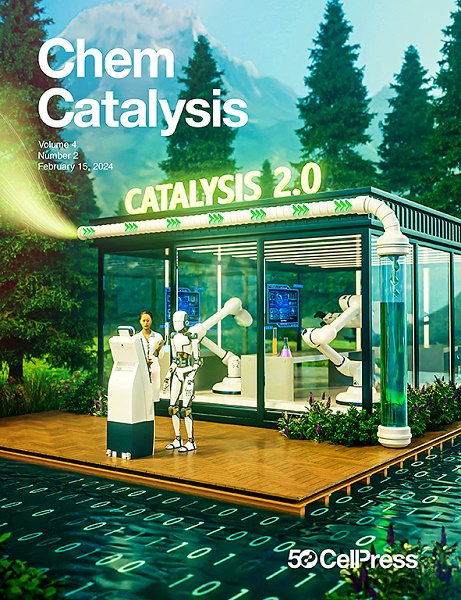肽催化:趋势与机遇
IF 11.6
Q1 CHEMISTRY, PHYSICAL
引用次数: 0
摘要
多肽催化剂的模块化使其具有广泛的结构和功能多样性,促进了催化剂在广泛转化过程中具有出色的活性和立体选择性、位点选择性和化学选择性。既定的筛选方法和特殊的催化剂基序显著地推动了这一领域的发展。展望未来,生物技术和高通量实验、人工智能驱动设计和实验室自动化方面的新兴方法有望扩大目前可获得的反应性的范围。我们认为,肽催化的这些进展不仅对合成化学有潜力,而且对理解生命起源的基本问题和开发新的功能材料也有潜力。本文章由计算机程序翻译,如有差异,请以英文原文为准。

Peptide catalysis: Trends and opportunities
The modularity of peptidic catalysts enables access to vast structural and functional diversity, facilitating the development of catalysts with outstanding activity and stereo-, site-, and chemoselectivity across a wide range of transformations. Established screening methodologies and privileged catalyst motifs have significantly advanced this field. Looking ahead, emerging approaches in biotechnology and high-throughput experimentation, artificial intelligence-driven design, and lab automation promise to expand the scope of currently accessible reactivity. We propose that these advances in peptide catalysis hold potential not only for synthetic chemistry but also for understanding fundamental questions about the origin of life and developing new functional materials.
求助全文
通过发布文献求助,成功后即可免费获取论文全文。
去求助
来源期刊
CiteScore
10.50
自引率
6.40%
发文量
0
期刊介绍:
Chem Catalysis is a monthly journal that publishes innovative research on fundamental and applied catalysis, providing a platform for researchers across chemistry, chemical engineering, and related fields. It serves as a premier resource for scientists and engineers in academia and industry, covering heterogeneous, homogeneous, and biocatalysis. Emphasizing transformative methods and technologies, the journal aims to advance understanding, introduce novel catalysts, and connect fundamental insights to real-world applications for societal benefit.

 求助内容:
求助内容: 应助结果提醒方式:
应助结果提醒方式:


